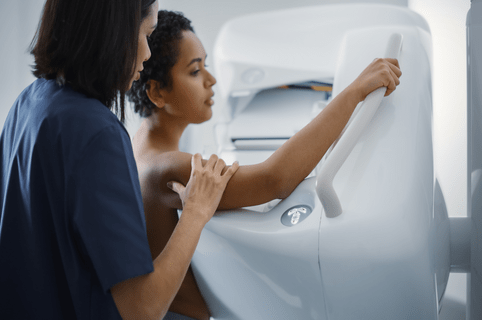Breast Cancer can affect Women of All Ages
Many women believe that in the absence of having a family history of breast cancer they are not at risk.
While family history is important only 5-10% of breast cancers are due to an inherited genetic mutation, and up to 70% of all breast cancers diagnosed in the USA arise in women without any significant family history of breast cancer.
Women in the USA have a one in eight (12.5%) chance of developing breast cancer during their lifetime. Depending on your personal health history, results of any previous breast biopsies, child birth and family history, your risk of developing breast cancer may be higher. Even if you are only in your 20's and 30's, a discussion with your health care provider about your individual breast cancer risk is encouraged.
Do you know if you have risk factors that place you at higher risk for developing breast cancer?
A “high-risk” designation can be determined by one factor or a combination of factors. Approximately 30% of breast cancer cases are attributed to lifestyle or hormonal risk factors. Some factors are controllable, such as weight, physical activity, diet, alcohol consumption, smoking status and delayed or no pregnancies. Other factors that you can control include age at childbirth and the decision to take hormones after menopause.
There are factors outside of your control. Examples of these are:
.png?h=75&w=75&hash=A47EA82833C1161C3FA10A0C359A57B2) Family history of breast and/or ovarian cancer
Family history of breast and/or ovarian cancer
Your risk increases if your mother, sister or daughter is diagnosed with either breast or ovarian cancer. Other red flags include family members diagnosed with breast cancer younger than 45, family members with bilateral breast cancers or any male breast cancer in your family. In addition, your risks can be increased if you have multiple family members diagnosed with breast or other cancers. Risk can be inherited equally from your mother’s or your father's side of the family.
.png?h=75&w=75&hash=85485C9A4F6CCEA3C62E6966635B646F) Genetic mutations
Genetic mutations
You're at higher risk if your family members have a mutation, especially BRCA1 or BRCA2 genes. Individuals with hereditary risk for breast cancer may have up to an 85% lifetime breast cancer risk.
.png?h=75&w=75&hash=28A14839A4215754F855EF0D245EDD2B)
History of abnormal breast biopsy
Atypical cells on a breast biopsy puts you at a higher risk for developing breast cancer.
.png?h=75&w=75&hash=48A85C4D0ADB28E2147F48402DBF8B34)
Dense breasts, seen on mammogram
Breasts comprised of more connective and glandular tissue and less fatty tissue have been associated with higher cancer risks and lower chances of detection on mammography.
 A high body mass index (BMI) of 25 or more
A high body mass index (BMI) of 25 or more
BMI is based on your weight in relation to your height and indicates if you're at a healthy weight. The higher your BMI, the higher your risk for developing breast cancer.
.png?h=75&w=75&hash=706395509108B1342F0DE3C6F0811B59)
Age
Risk of breast cancer increases with age. In fact, two out of three invasive breast cancers are found in women over 55. Early onset of menses (before age 12) or delayed menopause also place you at higher risk for developing breast cancer.
.png?h=75&w=75&hash=1707580BA0CF9D45843ECABF3595C362) History of chest wall radiation at a young age
History of chest wall radiation at a young age
Chest radiation at a young age for diseases such as lymphoma, Hodgkins Disease, and others increases breast cancer risk up to three times higher than the general population. This increase is highest starting 10-20 years after the radiation is completed.
.png?h=75&w=75&hash=5E40701D7F2A11C5A7F87039D9D80179)
Other family history
A family history of other cancer such as pancreas, prostate or melanoma, or an Ashkenazi/ Eastern European Jewish ancestry may place you at higher risk of developing breast cancer.

